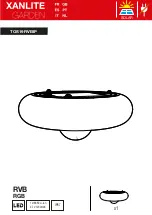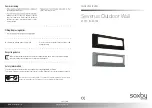
11
GB/IE
Mastering curves
Low Speed:
Shift your weight as if you are riding a bike. For
a left curve, shift your weight to your left foot, for
a right curve, shift your weight to your right foot.
High speed:
Use Cross over technique (see Fig. I).
Falling technique
First practise falling on the protective equipment
without ice skates on a soft pad. Try to always
fall forwards, never backwards! Let yourself fall
on the knee pads. Then, absorb the fall with
your elbow and wrist pads. Spread your fingers
to avoid injury.
Braking techniques
T-braking (see Fig. J):
To use the “T-braking technique”, shift your entire
weight to one foot. Now, move your other foot
behind the first and place it at a right angle to
the other. Next, shift your weight from the front
to the inside of the blade of your back skate
and brake with increasing pressure.
Plough braking (see Fig. K):
Place the blades at a slight diagonal to the skating
direction, shift your weight to the balls of your
feet and brake with both legs.
Maintenance
Sharpening the blades
CAUTION!
For your own safety, have your
blades sharpened only by a specialist
(e. g. sports shop or ice rink)! No changes
to the blade holders may be made!
After sharpening the blades, the blade ends
must have at least a 5 mm radius. Ensure
that the blades are not only hollow-ground
(see Fig. G), but the radius is resharpened
as well (see Fig. H).
For a significant improvement in the skating
characteristics of the blades, we recommend
that the blades be resharpened from time to
time as soon as they become dull.
Care and storage
Always use the cut protection for transport.
To protect the blades, use a blade protection
to walk outside of the ice surface.
Cut protection must be removed before using
the item. The cut protection is unsuitable for
walking on hard surfaces.
Always store the dry and clean product in a
temperate room.
Clean the product after each use with a dry
cleaning cloth.
Disposal
The packaging is made entirely of recyclable
materials, which you may dispose of at local
recycling facilities.
b
a
Observe the marking of the packag-
ing materials for waste separation,
which are marked with abbreviations
(a) and numbers (b) with following
meaning: 1–7: plastics / 20–22: paper
and fibreboard / 80–98: composite
materials.
Contact your local refuse disposal
authority for more details of how to
dispose of your worn-out product.
Warranty
The product has been manufactured to strict
quality guidelines and meticulously examined
before delivery. In the event of product defects
you have legal rights against the retailer of this












































